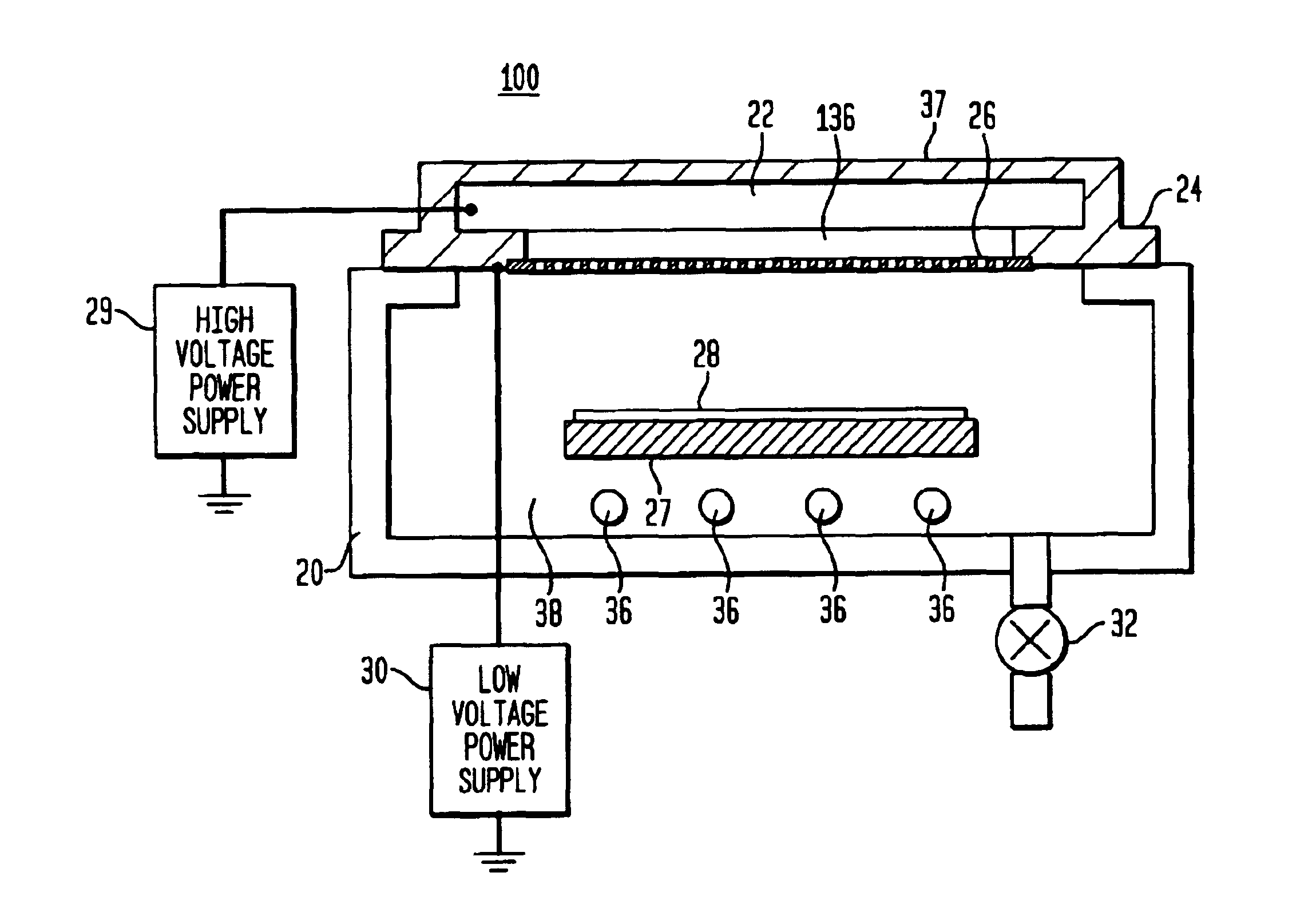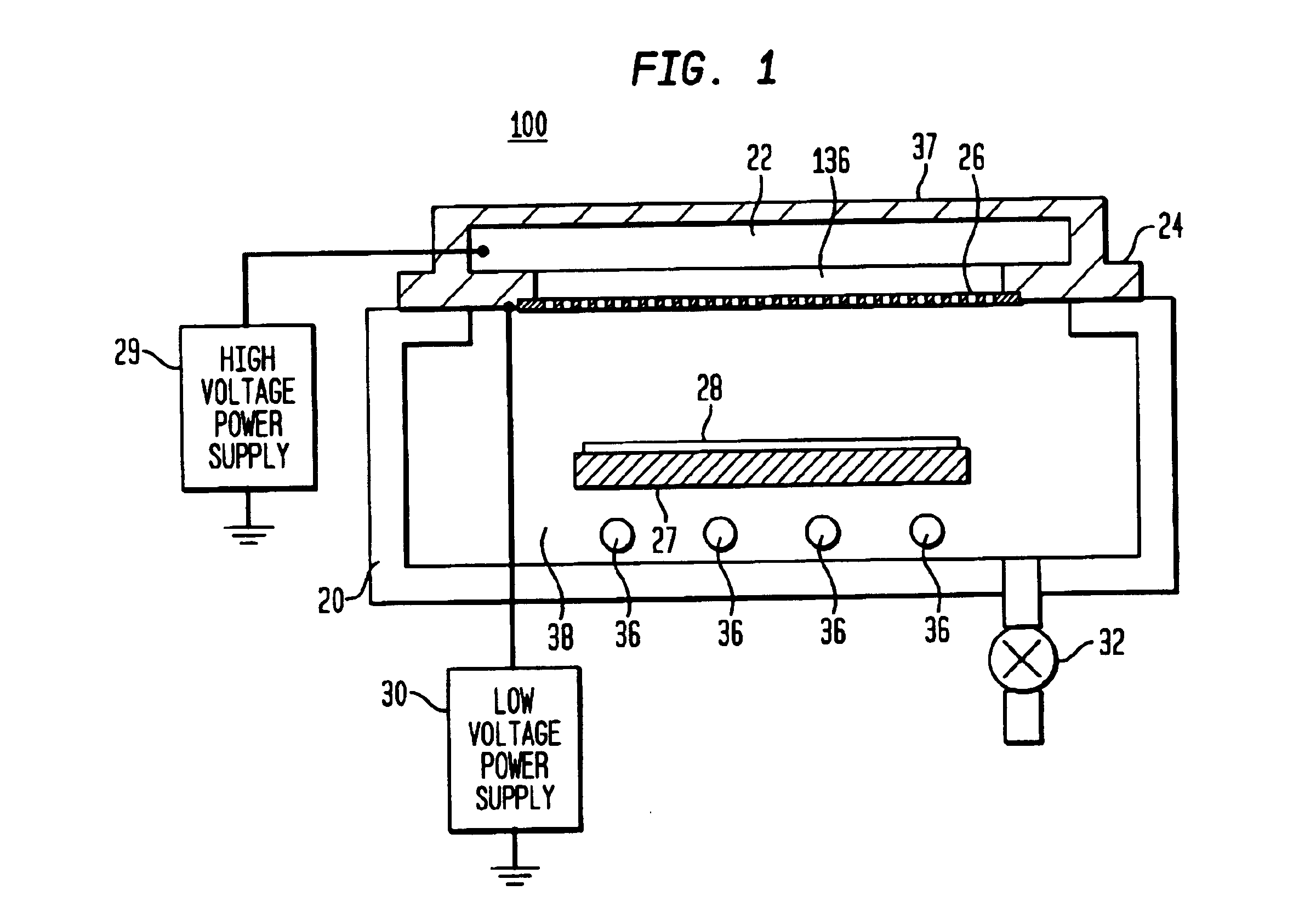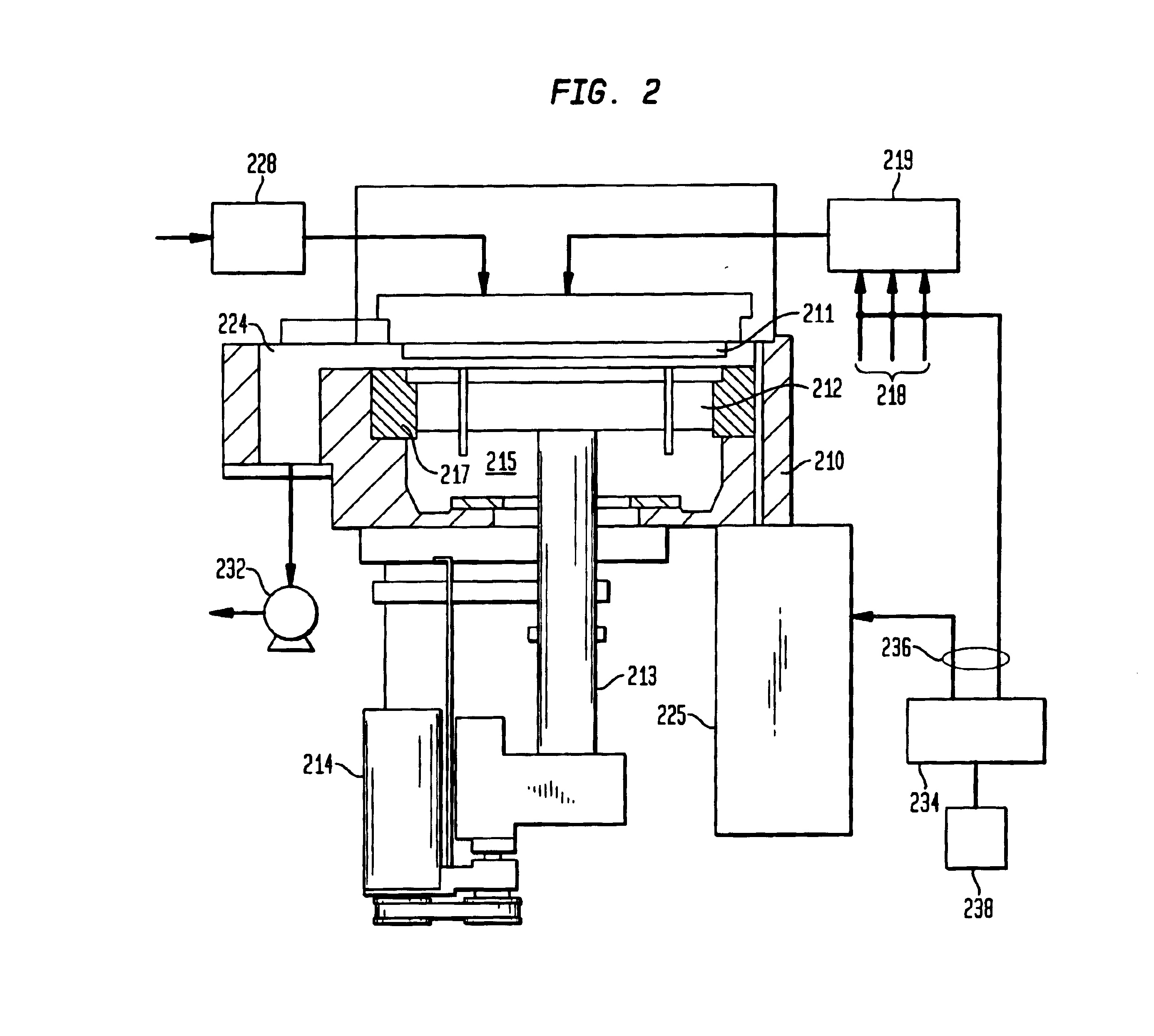Methods and apparatus for E-beam treatment used to fabricate integrated circuit devices
a technology of electron beam treatment and integrated circuit, which is applied in the direction of coatings, special surfaces, chemical vapor deposition coatings, etc., can solve the problems of rc delay, power consumption, crosstalk, and increase the complexity of fabrication
- Summary
- Abstract
- Description
- Claims
- Application Information
AI Technical Summary
Benefits of technology
Problems solved by technology
Method used
Image
Examples
example 3
[0087]A low dielectric constant film was deposited on a 200 mm substrate from the following reactive gases at a chamber pressure of about 6 Torr and substrate temperature of about 400° C.
[0088]Octamethylcyclotetrasiloxane (OMCTS), at about 5,000 mgm;
[0089]Trimethylsilane (TMS), at about 600 sccm;
[0090]Ethylene, at about 2,000 sccm;
[0091]Oxygen, at about 1,000 sccm; and
[0092]Helium, at about 1,000 sccm
[0093]The substrate was positioned 1,050 mils from the gas distribution showerhead. A power level of about 800 W at a frequency of 13.56 MHz was applied to the showerhead for plasma enhanced deposition of the film. The film was deposited at a rate of about 12,000 Å / min, and had a dielectric constant (k) of about 2.47 measured at 0.1 MHz.
example 4
[0094]A low dielectric constant film was deposited on a 200 mm substrate from the following reactive gases at a chamber pressure of about 6 Torr and substrate temperature of about 400° C.
[0095]Octamethylcyclotetrasiloxane (OMCTS), at about 5,000 mgm;
[0096]Trimethylsilane (TMS), at about 800 sccm;
[0097]Ethylene, at about 2,000 sccm;
[0098]Oxygen, at about 1,000 sccm; and
[0099]Helium, at about 1,000 sccm
[0100]The substrate was positioned 1,050 mils from the gas distribution showerhead. A power level of about 800 W at a frequency of 13.56 MHz was applied to the showerhead for plasma enhanced deposition of the film. The film was deposited at a rate of about 12,000 Å / min, and had a dielectric constant (k) of about 2.47 measured at 0.1 MHz.
example 5
[0101]A low dielectric constant film was deposited on a 200 mm substrate from the following reactive gases at a chamber pressure of about 6 Torr and substrate temperature of about 400° C.
[0102]Octamethylcyclotetrasiloxane (OMCTS), at about 5,000 mgm;
[0103]Trimethylsilane (TMS), at about 900 sccm;
[0104]Ethylene, at about 2,000 sccm;
[0105]Oxygen, at about 1,000 sccm; and
[0106]Helium, at about 1,000 sccm
[0107]The substrate was positioned 1,050 mils from the gas distribution showerhead. A power level of about 800 W at a frequency of 13.56 MHz was applied to the showerhead for plasma enhanced deposition of the film. The film was deposited at a rate of about 12,000 Å / min, and had a dielectric constant (k) of about 2.48 measured at 0.1 MHz.
PUM
| Property | Measurement | Unit |
|---|---|---|
| feature sizes | aaaaa | aaaaa |
| boiling point | aaaaa | aaaaa |
| pressure | aaaaa | aaaaa |
Abstract
Description
Claims
Application Information
 Login to View More
Login to View More - R&D
- Intellectual Property
- Life Sciences
- Materials
- Tech Scout
- Unparalleled Data Quality
- Higher Quality Content
- 60% Fewer Hallucinations
Browse by: Latest US Patents, China's latest patents, Technical Efficacy Thesaurus, Application Domain, Technology Topic, Popular Technical Reports.
© 2025 PatSnap. All rights reserved.Legal|Privacy policy|Modern Slavery Act Transparency Statement|Sitemap|About US| Contact US: help@patsnap.com



